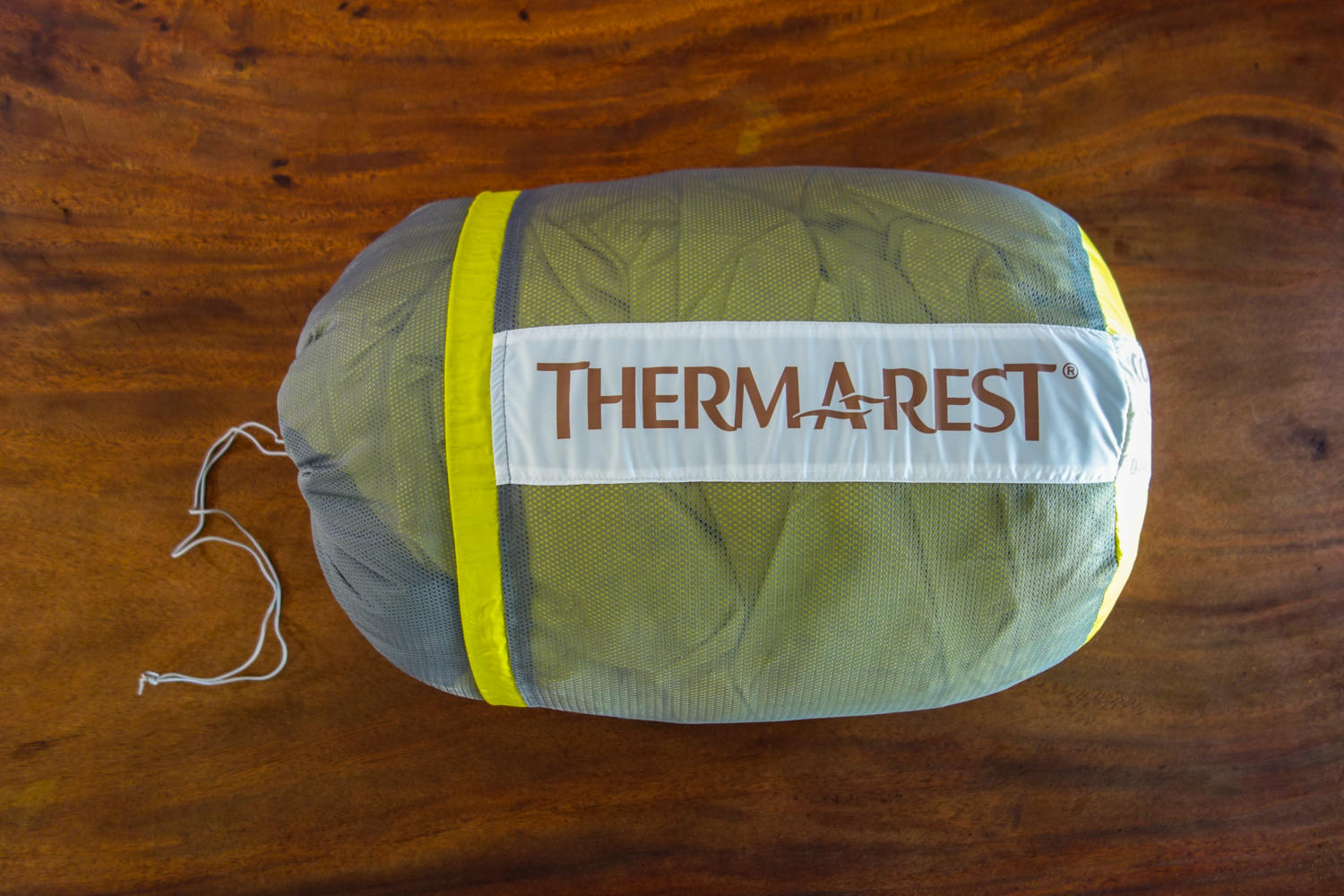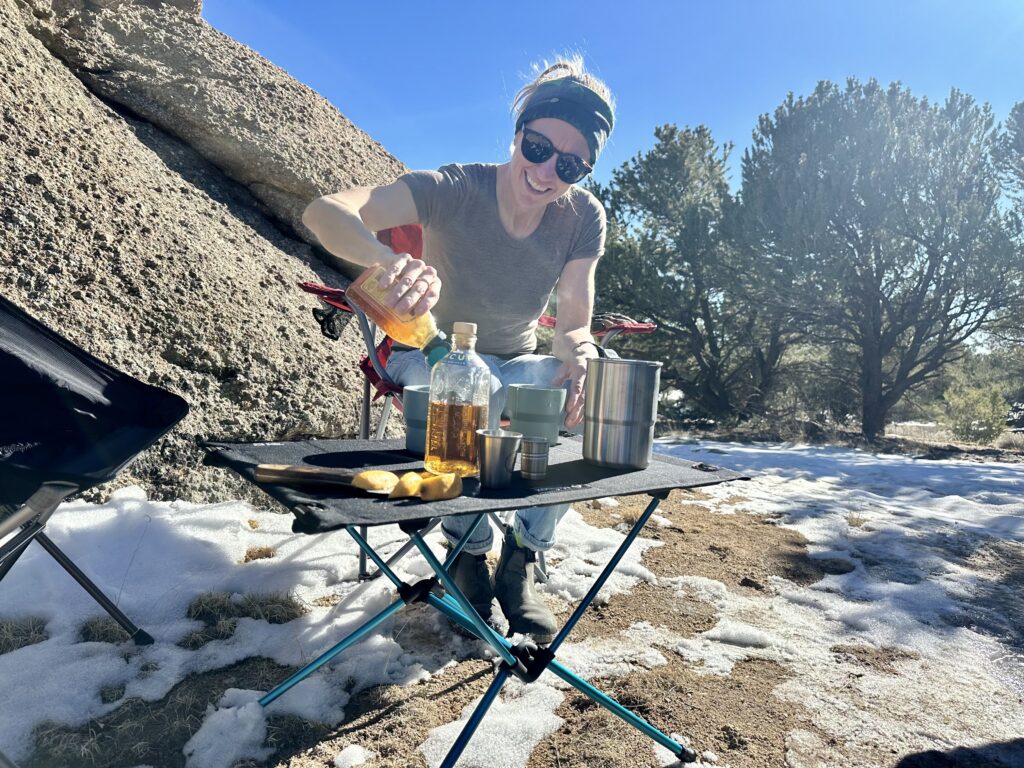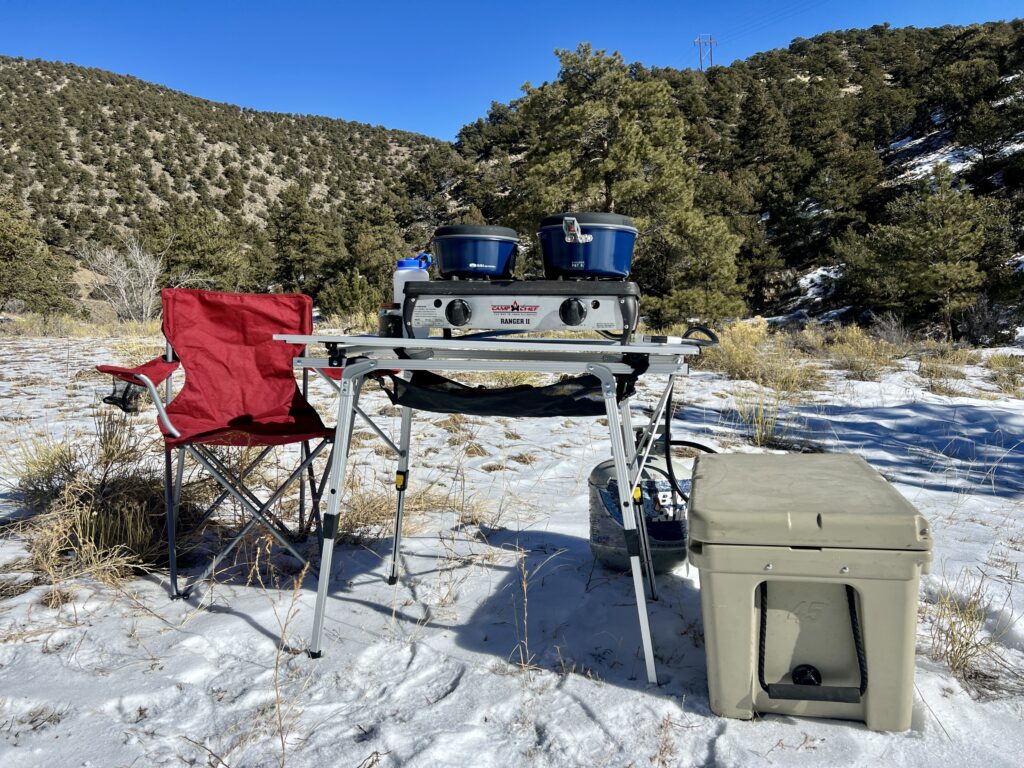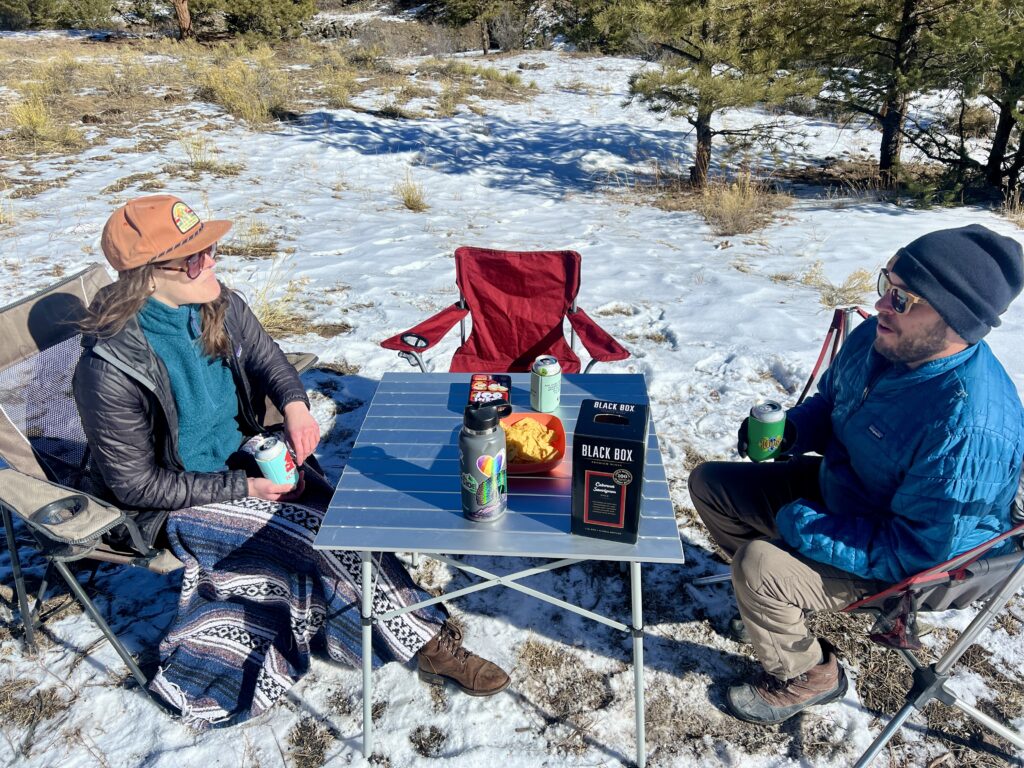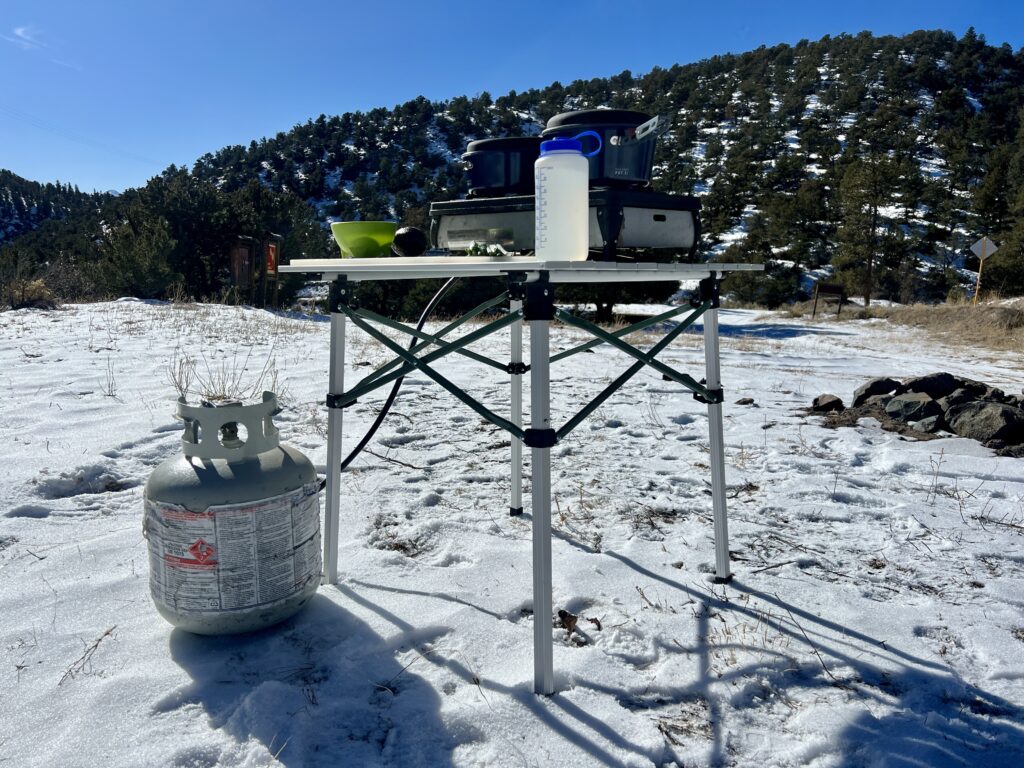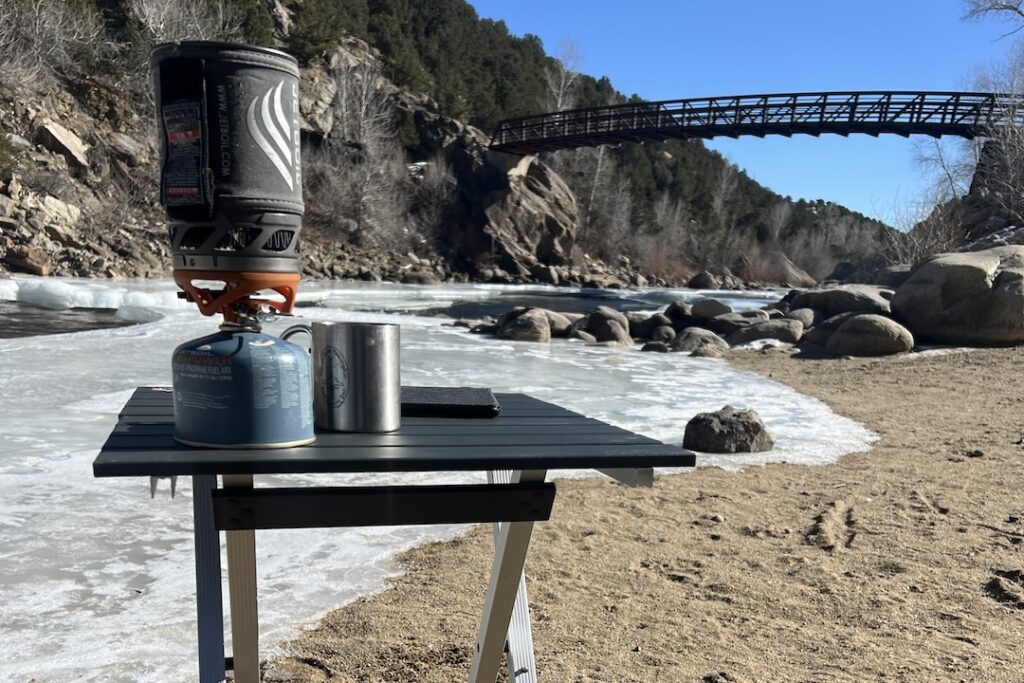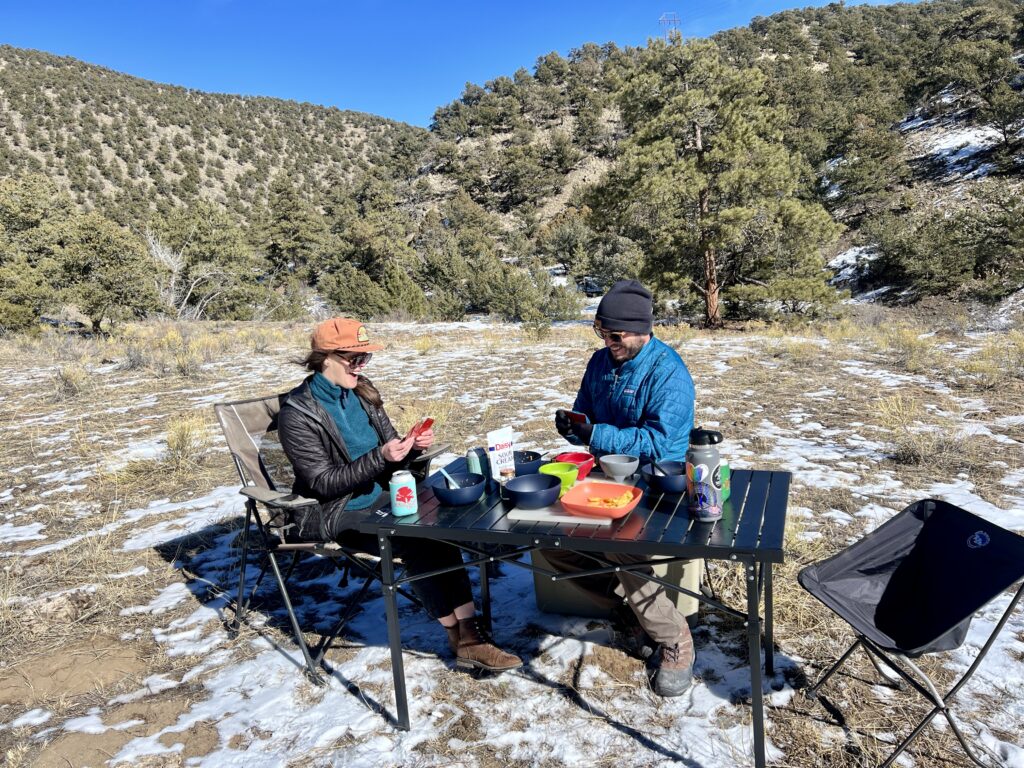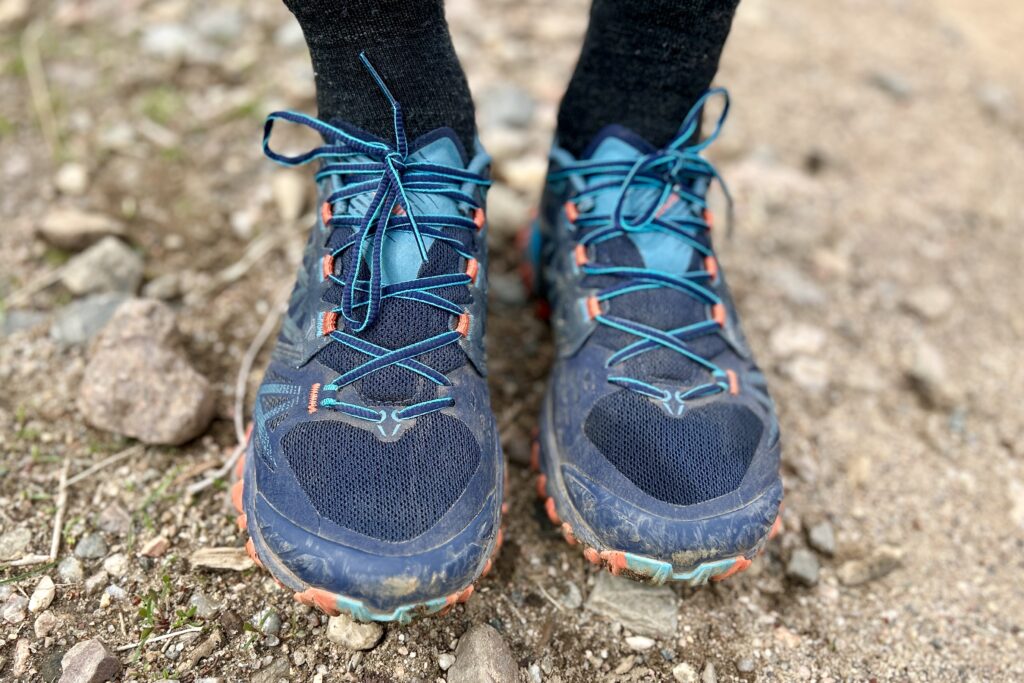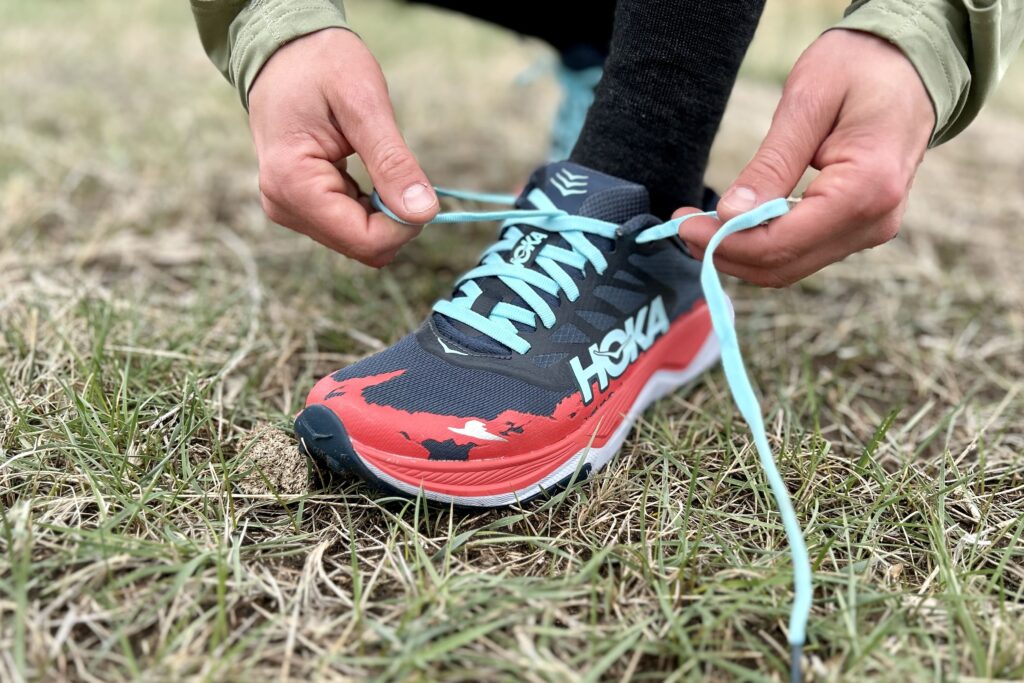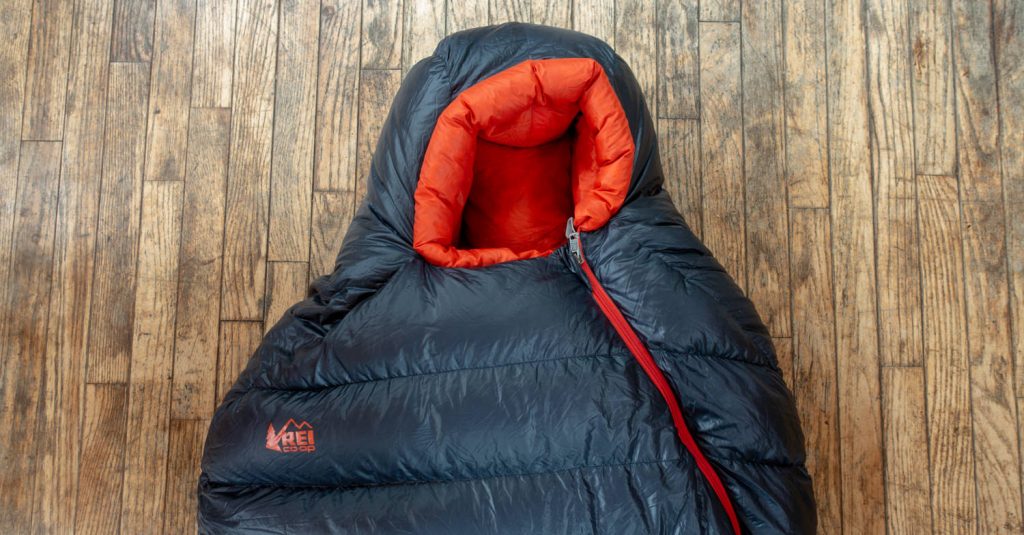
A quality sleeping bag may be one of the biggest backpacking investments you ever make. Your sleep sack will likely cost hundreds of dollars, but if you treat it with care, it’ll last for many years, possibly even decades. That said, nothing will ruin a quality sleeping bag faster than neglect.
In this article we’ll show you a few tips and tricks that will make it easier to prolong the life of your sleeping bag. Also, if you’re in the market for a new sleeping bag, make sure to check out our list of the Best Sleeping Bags & Quilts.
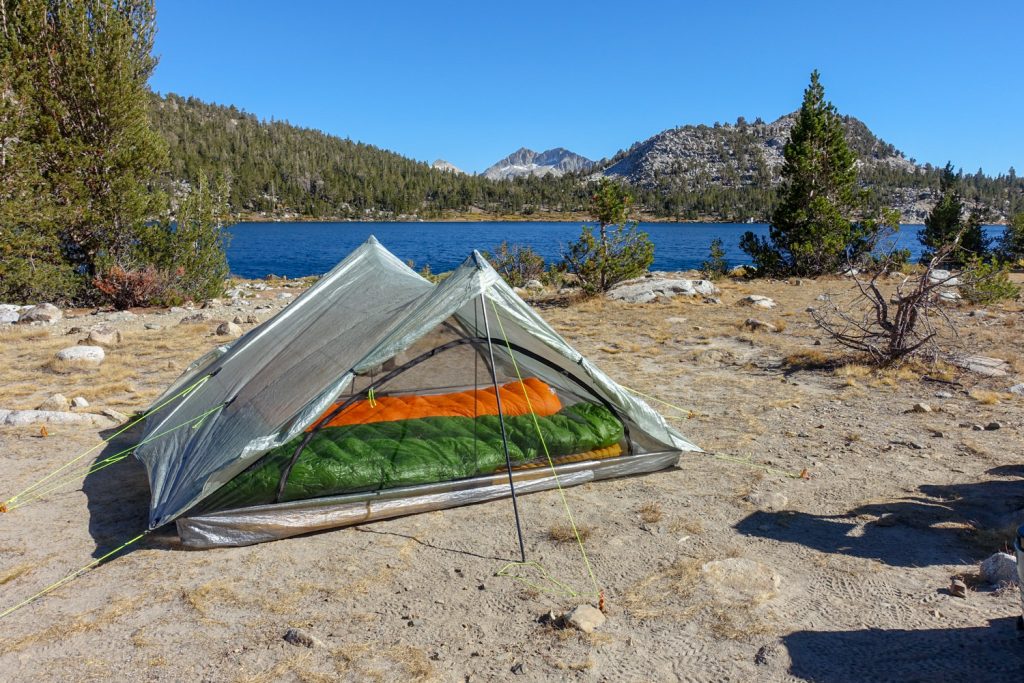
General Tips & Tricks
STORE YOUR BAG PROPERLY
One of the best things you can do to extend the life and health of your sleeping bag is to store it in a dry place where it can spread out. Never store a sleeping bag compressed. Ever. The best way to store a sleeping bag is to hang it up on a hook in a dry closet (not a musty basement or attic). You can also store it in a large breathable (cotton or mesh) bag in a dry place that will allow it to maintain its loft. Never put a sleeping bag in a plastic trash bag or non-breathable storage container.
SPRAY FOR FRESHNESS
If you want to give your bag the ultimate TLC, as soon as you return from a trip, hang it up and spray it lightly with Febreze inside and out (or use a similar product like an enzyme spray or anti-allergy spray). This will kill off any pollen or mold spores, and give it a fresh smell for your next use.
ONLY COMPRESS WHEN NECESSARY
It makes sense to carry your bag in a stuff sack while in transport, but once you get where you’re going, pull it out immediately, give it a fluff, and let it regain it’s loft. Leaving your bag compressed for long periods of time can damage the down feathers, causing your bag to loose loft and warmth.
KEEP YOUR BAG DRY
On the trail, we often carry our sleeping bags in waterproof stuff sacks when it’s raining, and we may even use a waterproof compression stuff sack to keep bulk to a minimum. Dry bags are a worthy investment for trips where you’re likely to encounter rain. Keeping your sleeping bag dry should always be a top priority for comfort and safety, but keeping your bag dry will also help extend the life of your equipment.
CLEAN YOURSELF UP
Sweat, dirt, and oil are long-term enemies of insulation, reducing your bag’s effective warmth rating. Some hikers embrace trail dirt and don’t mind sleeping in it, but we always try to clean up throughly after a long day on the trail. We also like to change into clean camp clothes when possible. This helps us sleep much better and keeps our sleeping bags free of dirt, sweat, oil, and bad smells. To wash up, we usually take a water bottle shower, use a handkerchief as a washcloth, and dry off with a small PackTowl. Also, remember to clean up at least 200 feet from water sources and only use biodegradable soap if really necessary (we take soap-free showers and they’re great.)
CONSIDER USING A LINER
A sleeping bag liner will help protect the interior of your bag from dirt and grime, and they can also add a little warmth. We generally don’t use liners because they can feel a bit constrictive and get tangled up, but they definitely help keep your bag fresh, and a lot of backpackers love them.
PROTECT YOUR BAG WHILE COWBOY CAMPING
Sleeping in your bag without a tent? Always use a ground sheet and sleeping pad to protect your bag from direct contact with the ground. This will help keep the outside of your bag clean and free of abrasions.

Cleaning Your Sleeping Bag
Many backpackers never clean their sleeping bags, allowing grit and grime to soak in for many years. Not only will this make for a super stinky sleep sack, but it will also eventually ruin your bag’s fabrics and decrease its loft and insulation. Sometimes you’ll only need to spot clean or deodorize your sleeping bag, but it may also be time for a full-on wash. If it’s time to deep clean your bag, check out our full sleeping bag washing guide. Below are some basic tips to get you started.
SPOT TREAT
Sometimes, all your bag will need is a spot wash around areas like the head or footbox. To do this, apply a small amount of down wash to an area and use a toothbrush to scrub away the grime. When completed, use a wet sponge to wash the area and remove the soap. If possible, hold the fabric away from the down filler to minimize getting the down wet. It’s ok if you do get the down wet, you’ll just need to give it adequate time to dry before storing your bag.
DEODORIZE
If your bag has a developed an odor, give it a good spray with Nature’s Miracle or Febreze and hang it to dry. You don’t need to saturate the bag since most of the odor will likely be in the fabric covering the bag. If the smell remains after hanging it out to dry for 24 hours, the stink may be in the down fill. If that’s the case, you can either spray it again, this time saturating the bag, or give it a full wash.
FULL WASH
Washing your sleeping bag may sound like a daunting task, but it’s actually pretty simple, though it will take a few hours. Down feathers are delicate, so it’s very important to wash your bag properly. Remember to always use specific Down Soap, such as Grangers Down Wash or Nikwax Down Wash. Check our our detailed guide – How to wash a down sleeping bag – for a step-by-step process to cleaning and restoring DWR to your bag.
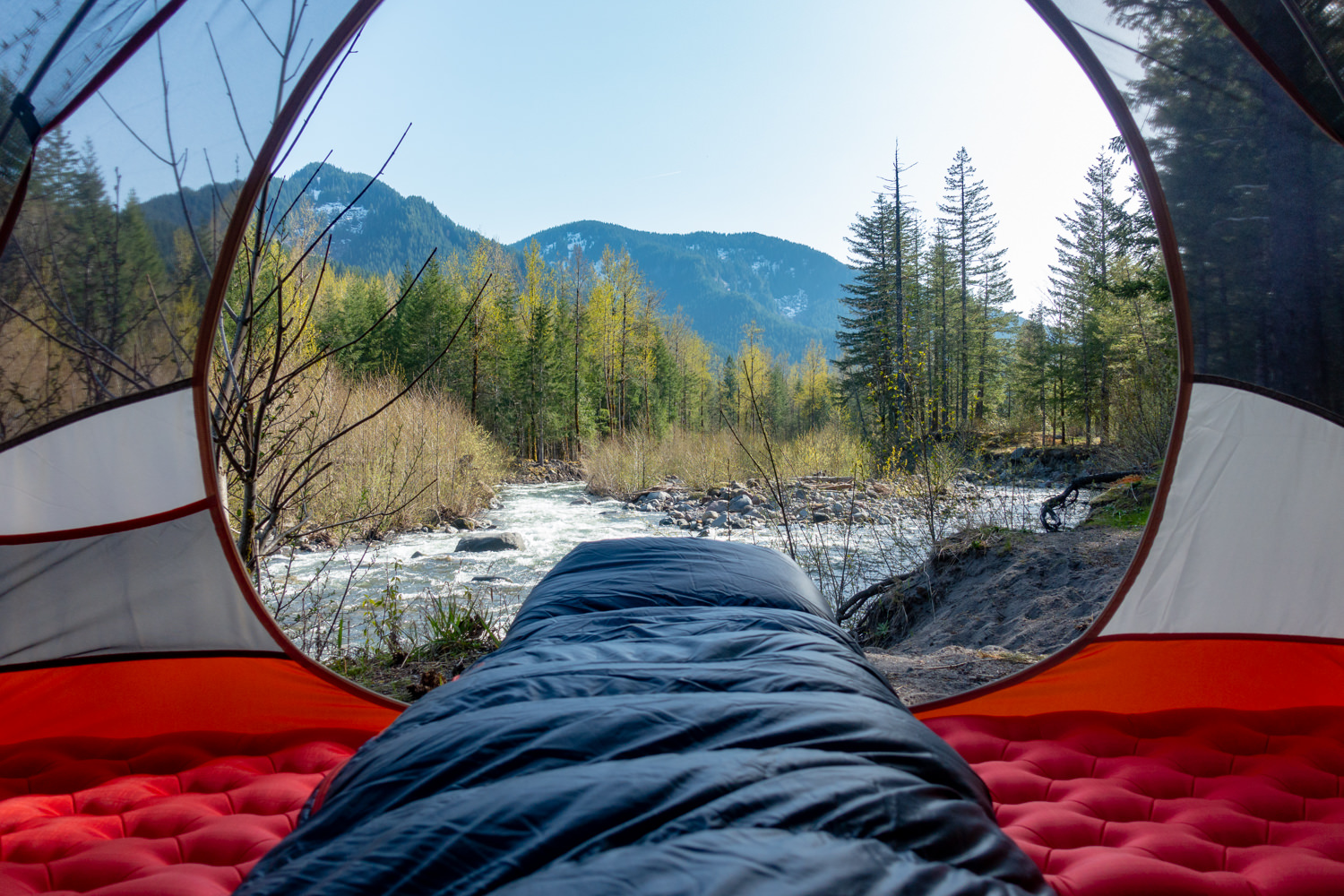
Sleeping Bag Repair
If you’ve owned your sleeping bag for a while, chances are you’ve experienced some of these common issues before. Most of these fixes should be fairly easy to address on your own. And remember, in a pinch, or even for a long term fix, Tenacious Tape is a really good fabric repair tool for sleeping bag holes or tears. Here are some easy fixes to common sleeping bag problems:
DOWN LEAK
Most down sleeping bags are designed with tightly woven fabrics that prevent feathers from getting out. But every now and then you’re likely see feathers poking their way through your sleeping bag fabric. When that happens, we recommend not pulling the feathers out, but instead trying to work the feathers back inside your bag by pulling the fill from the inside. You definitely don’t want to get in the habit of pulling feathers out of your sleeping bag, because that will create larger holes, making it easier for more feathers to escape.
FABRIC HOLES OR TEARS
Two-way zippers are sadly notorious for snagging fabric and ripping a holes in sleeping bags. Be proactive and take it easy on your zippers. Zip slowly and avoid yanking if your zipper gets stuck. If you do develop a hole in your sleeping bag, we recommend using Gear Aid’s Tenacious Tape to patch up the fabric. This sticky-back waterproof tape is great for fixing rips, holes and gashes outdoor gear. Alternatively, you could also hand stitch holes or tears with a needle and thread, but we prefer Tenacious Tape. Serious holes or tears may require a professional repair. If you don’t feel confident sewing or patching your bag yourself, we recommend contacting the bag manufacture.
ZIPPERS
To fix a derailed or broken zipper, you’ll need a zipper repair kit. That’s usually a task that’s best completed at home, so you may have to tough it out if you’re already on the trail. You may be tempted to use safety pins on your bag as a temporary fix, but we recommend agains that if possible. Introducing new holes into a sleeping bag’s fabric is generally not a good idea.
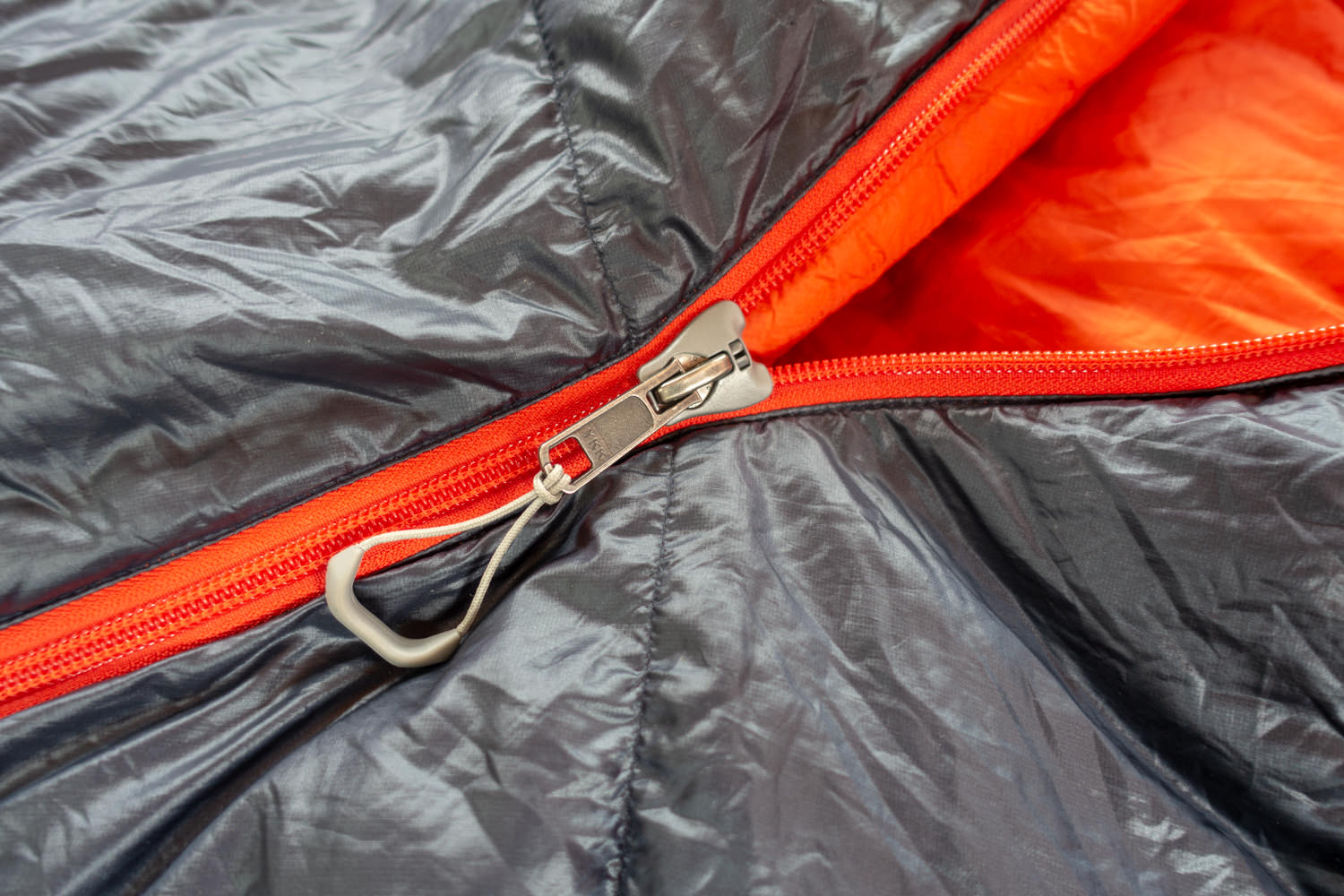
Sleeping Bag Storage Tips
REMOVE FROM STUFF SACK
As soon as you arrive home, take your sleeping bag out of its stuff sack and let it expand. Spend a minute or two fluffing the feathers and helping your bag regain it’s loft. This is one of the most important things you can do to help extend the life of your sleeping bag.
AIR IT OUT
Make sure you unzip your bag, open it up completely and ensure that it’s 100% dry before storage. You can also spay it with Febreze to reduce bad smells, but make sure to let your bag dry completely before you store it.
STORE IN A LARGE SACK OR HANG
Once your bag is dry and ready to be stored, we recommend either hanging your bag up, or placing it in the large mesh storage bag that it came with. Also, it’s very important to store your sleeping bag in a dry location (not a musty basement or attic).
